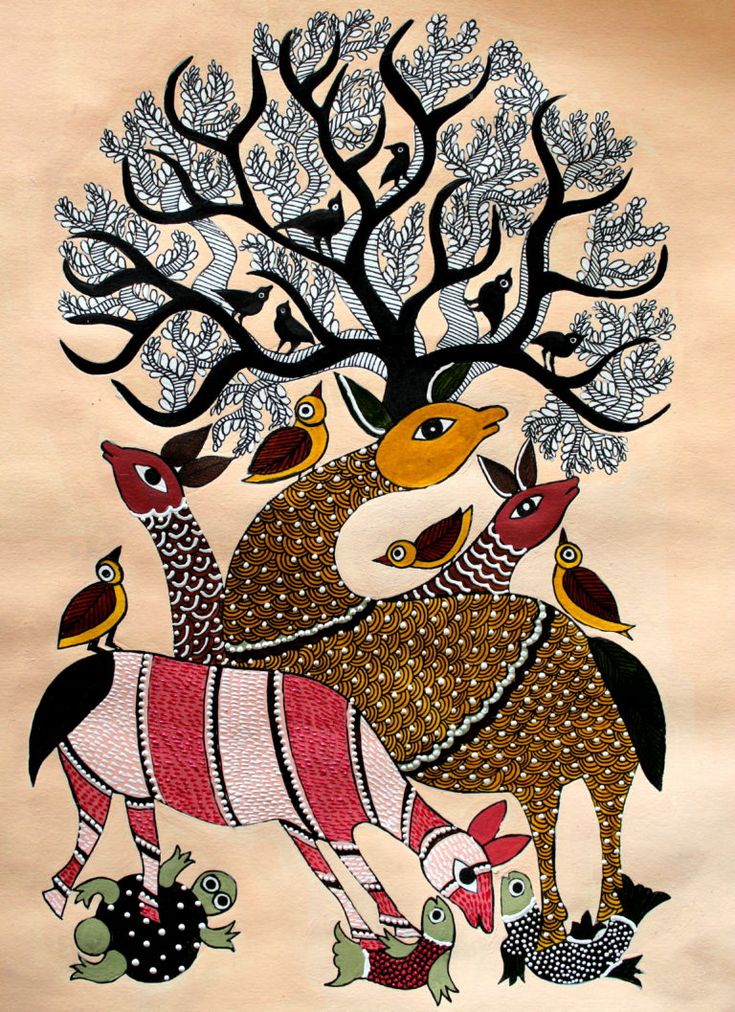Madhya Pradesh, located in central India, is a rich tapestry of cultures and traditions. The state is home to a diverse array of tribal communities, each with its own unique customs, beliefs, and artistic expressions. Among these is a wealth of incredible tribal arts that have been passed down for generations. From Bhittichitra’s intricate wall paintings to Warli’s bold and colourful depictions of daily life, these tribal arts are a testament to the creativity and resilience of Madhya Pradesh’s tribal communities. Let’s explore some of the most incredible tribal arts of Madhya Pradesh. (Also read: 6 beautiful traditional Indian art forms you must know about )
1. Mandana paintings
Mandana paintings are a traditional tribal art form of Madhya Pradesh that is practised by the Sahariya tribe. The paintings are typically made on the walls and floors of homes and are used to mark significant events and celebrations, such as weddings, births, and religious ceremonies. They are often decorated with symbols and motifs that hold cultural significance. The process of creating a Mandana painting is an intricate and time-consuming one, with each detail carefully crafted to convey specific meaning and symbolism. The art form is a testament to the rich cultural heritage of Madhya Pradesh and is a valuable part of the state’s artistic legacy.
2. Pithora Painting

Pithora Painting is a traditional tribal art form that is practised by the Rathwa community in Madhya Pradesh, India. The paintings also serve as an important form of social and cultural expression, conveying the beliefs and values of the Rathwa community. The creation of a Pithora painting is a communal and celebratory process, with multiple artists working together to create intricate and detailed designs. Today, Pithora Painting continues to be a valuable part of Madhya Pradesh’s artistic heritage and is recognized for its unique and striking aesthetic.
3. Gond art

Gond art is a style of Indian folk painting that originated in the Gond tribe of Madhya Pradesh. It is known for its vibrant colours, bold patterns, and imaginative imagery that often includes elements of nature and tribal life. Gond artists typically use natural materials such as charcoal, mud, and vegetable dyes to create their paintings, which are typically made on the walls of houses, on cloth, or on handmade paper. The art form has become popular globally for its unique style and has gained recognition as an important aspect of India’s cultural heritage.
4. Gudna Motifs

Gudna, which is largely practised by Gonds and Bhils, is not just another type of ground or wall painting. The bodies of tribal men and women are painted in this style! A needle is used to penetrate the bodily parts, and lamp soot, harsingar flower juice, or kumkum is then injected to add colour. In order to ward off evil, promote fertility, and ensure a bountiful crop, different patterns are made on various body areas using this technique.
5. Bhil art

Bhil art is a form of tribal painting that is practised by the Bhil tribe in India, primarily in the states of Madhya Pradesh, Gujarat, and Rajasthan. The art form is typically created using natural materials such as charcoal, mud, and vegetable dyes, and it is often used to decorate the walls of houses, festivals, and religious ceremonies. Bhil art reflects the rich cultural heritage of the Bhil tribe and is an important part of their identity. The bold imagery and bright colours of Bhil art make it a popular form of folk art, both within India and internationally.
